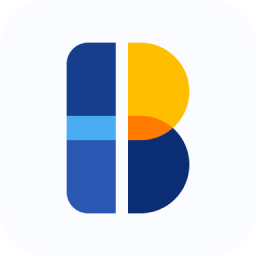Product Introduction
- Blueprint is a UX documentation tool that accelerates the creation of user experience flows by integrating directly with Figma designs. It enables users to import Figma files, organize UI elements on a grid-based canvas, and map user journeys using arrows and annotations. The platform streamlines collaboration between designers and developers by centralizing design assets and flow logic in a single workspace.
- The core value of Blueprint lies in synchronizing design and development workflows to reduce miscommunication and iteration delays. By automating the translation of Figma designs into structured UX documentation, it ensures teams work from a unified source of truth. This alignment minimizes friction during handoffs and accelerates product delivery cycles.
Main Features
- Users can import Figma designs by pasting a Figma page link into Blueprint, which automatically pulls all frames and components into the platform. This eliminates manual exports or file conversions, ensuring real-time access to the latest design iterations. Imported assets are instantly available on the grid canvas for drag-and-drop organization.
- The grid-based canvas allows precise arrangement of Figma frames using drag-and-drop functionality, ensuring pixel-perfect alignment and consistency. Users can group related UI elements into clusters or spread them across the canvas to visualize screen transitions. The grid system supports rapid reorganization, enabling iterative adjustments without disrupting the overall flow structure.
- Blueprint’s flowchart tools let users connect Figma frames with directional arrows to map user journeys, decision points, and error states. Annotations can be added to specific frames or flow segments to document interaction logic, edge cases, or developer notes. These visual and textual layers transform static designs into dynamic, actionable UX specifications.
Problems Solved
- Blueprint addresses the inefficiency of manually creating and maintaining UX documentation across disjointed tools like Figma, diagramming software, and text editors. Traditional workflows often lead to version mismatches, unclear annotations, and redundant communication between teams.
- The tool targets UX designers, product managers, and frontend developers involved in translating designs into functional products. It is particularly useful for agile teams managing complex applications with multi-step user interactions.
- Typical use cases include documenting checkout flows for e-commerce apps, onboarding sequences for SaaS platforms, or error-handling paths for fintech systems. Teams also use it to align stakeholders during sprint planning or QA testing by providing a visual reference for expected user behavior.
Unique Advantages
- Unlike generic diagramming tools, Blueprint natively integrates with Figma, allowing direct manipulation of design files without exporting or redrawing components. Competitors often require manual asset uploads or lack Figma’s contextual metadata, leading to fragmented workflows.
- The grid-based canvas introduces spatial organization for UX flows, a feature absent in most UX tools that rely on freeform canvases. This enforces structural consistency and reduces time spent aligning elements manually.
- Blueprint’s competitive edge stems from its dual focus on visual flow mapping and developer-ready documentation. Annotations are stored alongside Figma frames, making them searchable and exportable as technical specs. This hybrid approach bridges the gap between design exploration and engineering implementation.
Frequently Asked Questions (FAQ)
- How do I import Figma designs into Blueprint? Users paste a shareable Figma page link into Blueprint’s import interface, which fetches all frames and components from the specified page. The platform supports Figma’s auto-layout frames and preserves layer hierarchies for accurate representation.
- Can I collaborate with non-Figma users in Blueprint? Yes, stakeholders without Figma access can view and comment on flows in Blueprint. The platform generates shareable links with view-only or edit permissions, ensuring seamless cross-functional collaboration.
- What happens after the closed beta phase ends? Post-beta, Blueprint will offer tiered subscription plans for teams of all sizes, including a free tier with basic features. Existing closed beta users will retain access and receive priority onboarding support during the transition.
